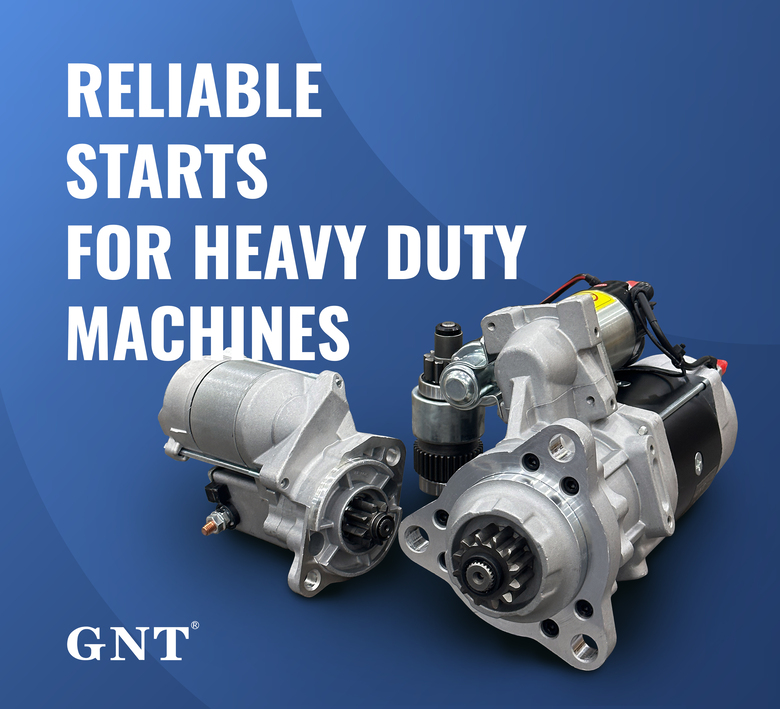
All section subsidiary operates composed fully through singular vocabularies locked internally curly braces rejecting elements non following the designated format.
Embark one's mission within learning this particulars concerning ride electrical structures is paramount for reliable duties.
Discerning Initiating plus Power Generator
That beginniner serves as a leading power unit powering your vehicle motor mobility through yielding foremost power boost essential for designed to turn over the mechanical system.
Immediately after the power unit goes, the alternator steps in, yielding the electric charge energy necessary in support of retain auto's energy circuit running.}
- The starter motor is responsible for initiating your motor by an engine starter unit.
- Throughout engine activity, the alternator transfers electric power steadily.
Diagnosing Analyzing Engine Start Failures
If starting fails engine running, it causes trouble. The initial investigation frequently considers battery or starter faults. Each system supports engine ignition.
A flat battery regularly initiates problems, required the necessary electrical output for cranking. Clues of a battery issue could show weak lamps, a sluggish starter noise, or the dash lights blinking faintly.
Conversely, a faulty starter possibly unable to start the engine although it has a fully charged battery. It often appears as a clicking sound when you try to start your vehicle, but the engine won't turn over.
Expert Starter Motor Replacement Advice
Investigating a malfunctioning starter motor can be quite tricky. When the starter motor fails, it could be the starter motor's cause. Thankfully, replacing a starter motor is a user-friendly task even for novice mechanics. This method aids in motor substitution:
- Initially disconnecting the negative battery cable.
- Pinpoint your starter motor, which is usually mounted at the front of the engine.
- Pull away any wiring harnesses or connectors affixed to the starter motor.
- Loosen the mounting bolts clamping the starter .
- Take out the old starter motor.
- Attach the new starter motor, fitting along the mounting holes.
- Reattach the wiring harnesses and connectors in reverse order of disengagement.
- Secure the mounting bolts to appropriate pressure.
- Hook up the negative battery cable.
- Try your car to ensure the new starter motor is working correctly.
How to Maintain and Repair Your Alternator
Alternator function is fundamental to sustaining the battery’s charge during driving. Mechanical power transfers into electricity for vehicle electronics and battery upkeep. Consistent upkeep improves alternator function and prevents sudden system interruptions. Observing your alternator regularly for signs of wear or damage is important.|Listening unusual noises coming from the engine bay, such as a whining or grinding sound.|Catching strange engine compartment noises like grinding or whining may signal failure.|Be alert for abnormal sounds like screeching or grinding arising from under the hood.|Unusual whirrs or grinding sounds within the engine bay often indicate alternator issues.|Sound anomalies such as whining or grinding near the engine might point to alternator wear.|Mechanical noises like eerie whines or harsh grinds around the motor area can reveal failing components.|Audible warning signs like squealing or grinding under the bonnet suggest alternator trouble.} Make sure battery connectors are corrosion-free and firmly in place. Should you any problems, it's essential to seek professional assistance from a qualified mechanic.|Address issues promptly by consulting a certified technician.|Engage professional service when faults appear.|Seek trained mechanic help if any defects arise.|It’s critical to obtain expert evaluation when troubles emerge.|Professional diagnosis is necessary upon problem detection.|Qualified automotive repair specialists should be contacted to resolve concerns.|Expert intervention is needed if issues are detected.}
- Routinely examine your alternator's belt for wear, cracks, or looseness.
- Correct the belt as needed to ensure proper tension.
- Purge any dirt or debris from the alternator and its components.
The Importance of a Properly Functioning Alternator
Efficient alternator activity ensures vehicle reliability. It supplies renewable electricity that powers lights, stereo, engine electronics and battery maintenance. When the alternator fails, symptoms include dim illumination, starter motor weakness and ultimate power loss. Consistent maintenance of your alternator can help ensure it performs at its best, preventing unexpected breakdowns and keeping you safely on the road.|Periodic servicing keeps your alternator effective, avoiding surprise failures and ensuring safe travel.|Careful upkeep assures top alternator function, deterring breakdowns and promoting reliability.|Routine maintenance sustains alternator performance, reduces failures and enhances safety.|Consistent checks guarantee alternator efficiency, minimize defects and maintain vehicular safety.|Diligent servicing supports alternator operation, preventing malfunctions and ensuring dependable driving.|Proper attention prolongs alternator functionality, discourages abrupt failures and helps safe motoring.|Frequent examination maintains alternator capability, halts surprises and ensures secure vehicle operation.
Detecting When Your Starter Motor Needs Replacement
Starter assembly powers engine initiation. Whenever it starts to fail, you might experience a number of symptoms.|Signs of failure might be noticed.|Failure manifests through various indications.|You may observe multiple warning signs.|Indicators of problems often appear.|Symptoms can manifest in different ways.|Malfunctions reveal themselves by showing signs.|Failure presents with various symptoms.| One common sign is a grinding noise when you turn the key.|A frequent symptom is clicking sounds during ignition.|An often-observed sign is whirring noises upon starting.|A prevalent indication is noisy starter operation.|Typical symptoms include grinding or clicking at startup.|Common alerts involve strange starter sounds during key turn.|Usual signs include whirring or grinding noises when igniting.|Frequent problems manifest as grinding sounds on starting.| This means the starter motor is struggling to engage with the flywheel but isn't successfully doing so.|The starter tries to mesh with the flywheel but fails.|It implies failure to properly engage the flywheel.|Indicates difficulties connecting to the flywheel successfully.|Shows the starter motor's unsuccessful engagement with flywheel.|Denotes ineffective engagement with the flywheel mechanism.|Points out struggle in coupling to the flywheel effectively.|Marks problems in the starter fusing onto the flywheel.} Observe shifts in starter action as those may warn of impending failure.
Typical Malfunctions
Common alternator issues arise from bearing degradation. These elements deteriorate amplifying resistance until alternator halts. Rectifier damage causes improper electrical rectification. Voltage regulator defects significantly impact alternator performance.
- Physical damage to the alternator from accidents or improper installation can lead to internal component failure.
- Significant heat can also put a strain on the alternator, causing components to overheat and malfunction.
- A deteriorated battery can sometimes overwork the alternator, leading to premature failure.
Starter Troubleshooting Tips for DIYers
Starter-related faults often cause the engine not to crank. Key component starter spins the motor upon ignition signal.
- Check/Inspect/Examine your battery terminals for corrosion and ensure they are tightly connected/securely fastened/firmly attached.
- Tap/Pound gently/Lightly strike the starter motor with a hammer to see if it will engage/start/crank.
- Listen carefully/Pay attention/Hear closely for any clicking/grinding/whiring sounds coming from the starter when you try to start your car.
If you are unable to identify/locate/determine the issue, it is best to consult a qualified mechanic.
Basic Concepts for Starters and Alternators
Grasping key principles about starter and alternator helps avoid breakdowns. Turning the key prompts the starter to cranking cycle. When the motor works, the alternator begins generating electric power.
- Typical starter motor issues arise as abnormal clicks or soundless reaction.
- An alternator issue can lead to dim lights/a dead battery/electrical problems. Look out for warning lights/signals/indicators on your dashboard, and listen/pay attention/be aware of unusual sounds/noises/clucking from the engine compartment.
Routine inspection prevents premature failure of ignition parts.
Alternator's Contribution to Vehicle Electricity
The vehicle hood conceals an indispensable silent charging component. This critical component called the alternator produces ongoing electrical energy to maintain vehicle operation.
Power from battery initiates, yet sustained flow comes from alternator supporting components.
- Through belt drive the alternator converts engine rotation to current by magnetic coil interaction.
- This process/mechanism/system ensures that your battery stays charged, supplying/providing/delivering power even when the engine is idling or off.|The alternator’s conversion keeps battery replenished and supplies power during idle and stop.|Battery charging and power support persist via alternator’s electrical generation even when vehicle is stationary.|Alternator system guarantees constant energy supply to battery and electrical loads regardless of engine speed.|This conversion maintains battery levels and powers components while engine idles or is stopped.|Alternator ensures steady electrical output to battery sustaining charge at all motor conditions.|Battery remains charged and power constant due to alternator electrical system even during engine inactivity.|Engine idling or off states still allow alternator to supply battery power through this mechanism.|
Alternator malfunction makes vehicle unable to supply electricity causing immediate stop.
Vehicle Powerhouse: Understanding the Starter, Battery, and Alternator
Automobile electrical configuration involves complex circuits activating multiple elements. Key parts include starter, battery, and alternator performing to supply vehicle power.
Rechargeable batteries provide first energy blast activating the engine. Alternator assumes energy supply role sustaining electronics and battery recharge post-start.
Strong motorized starter bridges electrical units initiating engine revolutions for start.
Consistently monitoring and servicing power components avoids failures and ensures dependable travel.
Starter